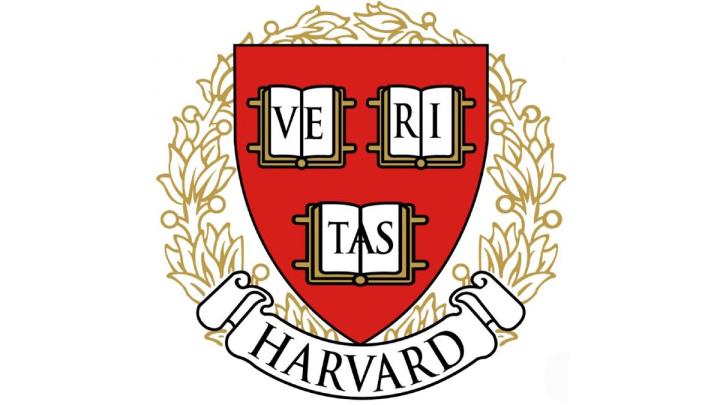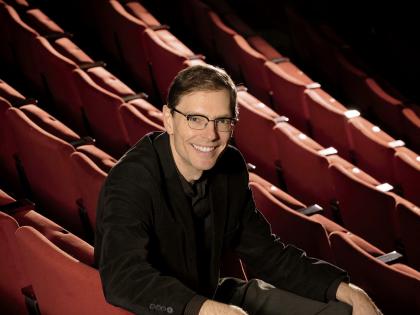The University announced today that The Harvard Campaign—launched publicly three Septembers ago with $2.8 billion given or pledged toward a $6.5-billion goal—had secured gifts or commitments totaling “more than $7 billion” as of this past June 30, the end of Harvard’s fiscal year. This is, in nominal terms (not adjusted for inflation) the largest sum ever raised in a higher-education capital campaign (Stanford’s last effort, concluded in 2011, raised $6.2 billion)—and Harvard fundraisers remain hard at work, with the formal end of the drive now firmly set for June 2018, the end of that academic and fiscal year. (Its ultimate outcome is especially significant for University academic aims in light of recent news about the endowment; this report outlines the broader Harvard financial context below.)
Campaign Milestones
During prior periodic updates, the fundraisers had disclosed reaching the $5-billion level as of the end of calendar year 2014, and $6 billion as of June 30, 2015. There has been no mid-year or other interim report since, fueling speculation that fundraising momentum might have slowed (that would hardly be a surprise, after the initial waves of quiet- and public-phase gifts). But sporadic school updates and gift announcements ($35 million for an early-childhood initiative at the Graduate School of Education, $20 million for global health and social medicine at the Medical School) have suggested continuing donor enthusiasm for Harvard’s mission and goals.
“I am deeply grateful to everyone who has participated in this outstanding effort so far,” said President Drew Faust in a statement. “Our aspirations speak to our larger hopes not only for a better Harvard, but also for a better world—a world changed by the students we educate, the knowledge we pursue, and the discoveries and innovations we generate every day on our campus. The support we’ve received thus far resounds with confidence in the enduring value of this work and the essential role that Harvard—and all of higher education—plays in society.”
Faust has 133,000 households and other donor entities to thank directly, according to the newly announced total of campaign supporters—reportedly including gratifying numbers of alumni donating to support University schools other than the one(s) they attended, and a rising number of international donors.
Today’s announcement indicates that Harvard has been able to maintain gifts and pledges at an annual rate of about $1 billion even after the burst of commitments accompanying the University’s public launch in 2013, and the individual schools’ coming-out celebrations thereafter—each, a galvanizing event for philanthropy. Campaign volunteers are described as very much engaged and energized by their work, and donor support has manifestly not flagged. Simply extrapolating recent experience, the University would seem headed for total campaign proceeds of $9 billion or more.
In the meantime, the tangible fruits of campaign largess are already in evidence, most visibly in the form of construction projects that are transforming the campus. The University news announcement also highlighted $820 million of support to date for financial aid (up from $590 million booked at the end of December 2014): $460 million for undergraduate aid, and $360 million to support graduate and professional students. The Faculty of Arts and Sciences (FAS) has sought at least a half-billion dollars to endow College financial aid, on which it spent $170 million in fiscal 2015—a great portion of which has heretofore been unendowed, given the significant expansion of aid during the prior decade. To the extent that financial aid depends on unrestricted funds ($97 million of the $240 million FAS spent on all aid—undergraduate, graduate, and extension-school students—in fiscal 2015), the school’s investments in new academic ventures, startup funding for new professors’ research, and other priorities are constrained.
The news release also pointed to funding for “nearly 90 professorships” across the University, a mixture of existing and new positions. That total is up from the 75 chairs funded by the campaign as of the end of fiscal 2015, cited by Faust in her letter in the annual financial report for that year. Further programmatic details can be found in the announcement.
Plenty of work remains to be done. The sheer scope of some of the highest priorities points toward continued focus on fulfilling major objectives—such as construction of the $1-billion science and engineering complex in Allston and renewal of the College’s undergraduate Houses—for which further philanthropic support is very much needed.
(Given the urgent need to fund and construct the science complex, other Allston projects outlined earlier among campaign priorities, or identified in Harvard’s 2013 institutional master plan for development there, appear to be on a slower track—or have actually been altered. The protracted academic planning for a proposed Gateway building at the intersection of North Harvard Street and Western Avenue, a possible home for quantitative social sciences and other academic units, apparently continues, subject to future donor funding for design and construction. Recent visitors to the athletic complex may have seen the heavy construction now under way at Lavietes Pavilion, the 2,195-seat home to the basketball teams since 1982; steel is being placed for an expansion that will—after a hiatus for this season, and then completion of work next spring and summer—yield new, expanded locker rooms and coaching spaces, and a general renovation along the lines effected for the recently overhauled Bright-Landry Hockey Center. The renovation means that the 3,000-seat new basketball venue, proposed in the master plan as part of a mixed-use University housing/office and retail facility—totalling 270,000 to 340,000 square feet and to be located across North Harvard Street from the Gateway site—is now off the table. It is uncertain what may be planned there, minus the basketball arena. And the extensive renovations of and additions to Harvard Stadium, also outlined in the 2013 plan, appear to be in the discussion stage; repairs to the concrete structure are known to be needed, but the scope of additions, amenities, and the proposed reconfiguration of seating apparently remain to be specified.)
Consistent with prior updates on the campaign’s progress, today’s announcement focused on fulfilling those two building goals, and also:
- strengthening financial aid for students at all Harvard schools;
- fostering basic scientific research;
- reaffirming the University’s core commitment to the arts and humanities; and
- ensuring that all schools achieve their priorities.
As of June 30, schools reported the following results:
- Harvard Graduate School of Education, gifts and pledges of $228.6 million (91 percent of its $250-million goal);
- the Divinity School, $30.5 million (61 percent, $50 million);
- the Medical School, $584.6 million (78 percent, $750 million);
- Harvard Kennedy School, propelled by support for its campus reconstruction, $523 million (and counting, as unmet priorities set within the $500-million campaign goal are pursued); and
- the Harvard T.H. Chan School of Public Health, $760.2 million (including the $350-million naming gift); excluding that extraordinary gift, the school has raised $410.2 million (91 percent, $450 million).
The engineering and applied sciences school, with a similar $400-million naming gift, reached its nominal goal long ago, but also continues to seek support for unfunded specific goals. Updated September 1, 2016, 1:00 p.m.: Harvard Business School reports nearing its $1-billion goal as of June 30, and continiuing to raise funds for its key campaign priorities. Updated September 2, 2016, 9:30 a.m.: The Radcliffe Institute reports reaching $56 million in gifts and pledges as of July 31 (80 percent of its $70-million goal). (Additional schools will be added as they report; check back for updates.) Updated October 5, 2016, 9:15 a.m.: Previewing his forthcoming 2015-2016 annual report with colleagues at the first Faculty of Arts and Sciences meeting of the fall term on October 4, dean Michael D. Smith reported that as of last June 30, the FAS had exceeded its nominal $2.5 billion campaign goal. Updated October 12, 2016, 1:15 p.m.: The School of Engineering and Applied Sciences, bolstered by the historic naming gift of $400 million in unrestricted endowment funds from John A. Paulson, M.B.A. '80, reported a June 30 total for campaign gifts and pledges of $606 million, exceeding its initial $450-million goal. Some of its specific goals—for endowed faculty chairs, graduate-student fellowships, and teaching funds—remain to be fully funded; and with construction under way on the new 550,000-square-foot Allston facilities (for which the central administration is raising funds as a Harvard Campaign priority), the school continues to solicit support to equip and operate that complex, too.
Other Financial Developments
Continued fundraising prowess may be particularly important now, in light of signs that returns on the endowment may have been weak—a particular challenge amid continuing changes in leadership and strategy at Harvard Management Company (which invests the endowment assets; endowment results are typically reported in early autumn). Distributions from the endowment for the operating budget—the largest source of revenue for running Harvard each year—must also go a long way toward paying the operating costs of new facilities enabled by capital-campaign largess. (For example, increased energy consumption in renewed Houses, reflecting air conditioning of common spaces; enhanced facilities such as House classrooms and performing-arts spaces; and contract janitorial service for bathrooms in configured hallways.)
Deans will, accordingly, be particularly eager to sustain unrestricted annual giving, gifts for capital projects under way or planned soon, and pledges to endow professorships, financial aid, and other longstanding priorities.
Alongside the endowment results and the fundraisers’ continued success, the University’s financial leaders are pursuing other measures to bolster Harvard’s fisc. A legal notice published on August 24 indicated that Harvard has approached the Massachusetts Development Finance Agency to pursue the potential refinancing of up to $2 billion of its tax-exempt bonds outstanding (see the notice of hearing, scheduled September 7). That debt, issued from fiscal years 2008 to 2011, has annual interest costs ranging from 4.6 percent to 5.5 percent. It is uncertain how much of the principal amount Harvard will refinance (there is a tradeoff between the prepayment costs incurred and the subsequent interest savings over the lifetime of the bonds). But at current low market rates, the calculations suggest that there are significant savings to be had: an additional source of funding, in effect, for the institution’s academic mission—and a welcome complement to the efforts of the many thousands of donors who have propelled The Harvard Campaign to date.









